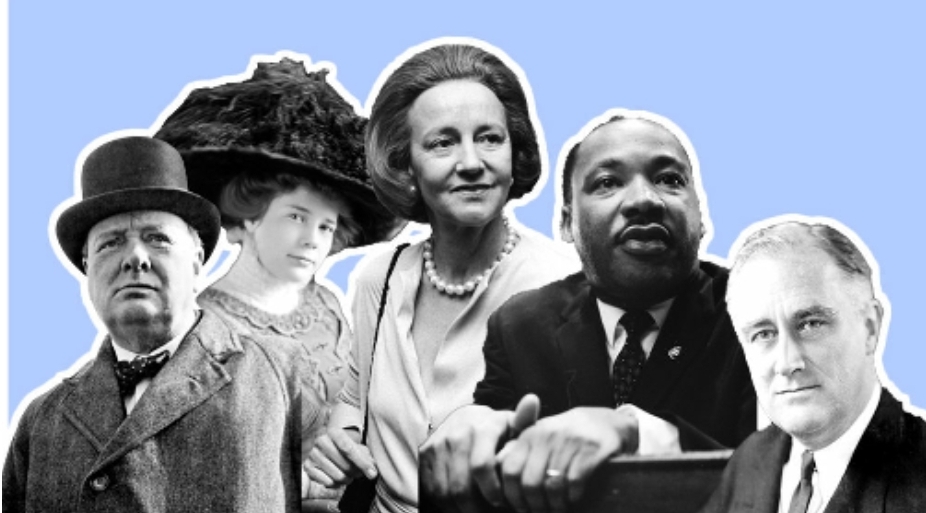“I know that real leaders are not born; the ability to help others triumph over adversity is not written into their genetic codes. They are, instead, made. They are forged during times of crisis. Leaders become ‘real’ when they practice a few key behaviors that gird and inspire people through difficult times.” -HBR
As COVID-19 tears its way through country after country, town after town and neighborhood after neighborhood, there is a lot that we can learn from some of history’s iconic leaders and how they acted in the face of uncertainty, danger, and fear.

We can look towards Antarctic explorer Ernest Shackleton’s leadership. In 1915, when his expedition ship The Endurance was stuck in the ice and he realized that he and his crew would have to wait out the brutal winter on a floating iceberg, he insisted that each man maintain his daily routine. He and many like him have emphasized on acceptance and adaptability, along with the courage to make the decisions and face the truth. When we look at all the great leaders throughout history, like Nelson Mandela, Mahatma Gandhi, Winston Churchill- all of them became famous for how they reacted in times of crisis. This does not mean one is greater than the other. Rather, it is a distinctive feature of all true leaders.
Bill Gates’ description of leadership during bad times as described in his book The Speed of Thought: “At the 30,000 ft. level, a CEO’s central role,” writes Gates, “is to do something rare: look for bad news and empower people to respond to it.” He says leaders must model safety and encourage employees to share bad news as much as good news. They should be able to master the art of making tough decisions during a crisis.

Here are two processes to help—one from psychology and one from the military. The Military Decision Making Procedure was one that I personally found super exciting and helpful.
Military leaders must make critical decisions while working all the time. I learned about the Military Decision-Making Process (MDMP) when I worked with soldiers for several years teaching them resilience and stress management strategies.
- Step 1—Receipt of ‘Mission’: There is a big, complex issue that needs a decision, and it requires other personnel – likely your team.
- Step 2—‘Mission’ Analysis: The team must analyze all of the variables contributing to the end decision.
- Step 3—Develop Courses of Action: Because it can be tempting (and easy) to get married to your idea, you need to lay out a specific structure for all of your options.
- Step 4—Evaluate Each Course of Action: Each leader now separately considers how a decision will impact his or her corner of the world.
- Step 5—Compare Courses of Action: The team reconvenes to weigh the results of Step 4.
- Step 6—Make a Choice: The CEO (or ultimate decision-maker) chooses the course of action to take and/or may create a new course of action for the team to execute based on the findings.
- Step 7—Take Action: Implement the decision.

In today’s scenario, we see so many countries, health institutes, company owners, business owners and everyone else at a point where they have to make some tough decisions. The main distinction here becomes something much more human. Real leaders are not superheroes who never falter. They are human beings that are willing to admit if they make a wrong decision and try and move forward with it. This is the main distinctive factor that earns the respect of people. Our country India is doing this, as opposed to covering up mistakes and not taking responsibility like China. Our neighbor’s actions have only resulted in them losing their prestigious position in the world.
As the COVID-19 pandemic shakes the global economy and disrupts the way we live, work, and conduct business, leaders are scrambling to manage the immediate fallout. But, as history proves, it’s also necessary to prepare for what’s next. Visionary leaders like Abraham Lincoln, FDR, Winston Churchill, and Nelson Mandela didn’t simply react to the most imminent threats confronting them; they also looked beyond the dark horizon. They were guided (and guided their people in turn) by their vision for a better future, after those challenges had been overcome.
While you can’t predict what’s coming with perfect certainty, you can develop much more clarity than you might imagine about what you could and should become by creating a plan to live into it, and then setting it into motion. Here’s our process, as detailed in the new book Lead from the Future, for the same:
- Developing a strategy to walk back your envisioned future to the present day
- Spending time envisioning your future
- Being prepared to learn and pivot
- Rallying your team around your vision.
My final parting advice to you is that leadership is everywhere. It is there in the tiniest decisions you make. Every action you take affects the world around you in some way. So never think leadership isn’t your responsibility. Face the crisis, take the tough decisions, and look forward. Stay home, stay safe and keep striving!
By Preya Pandya
